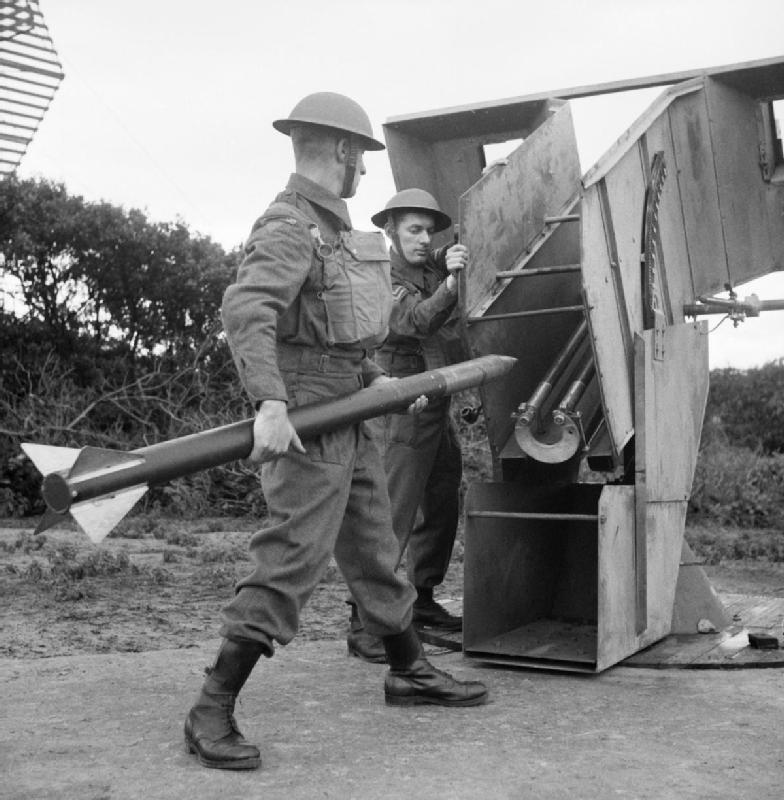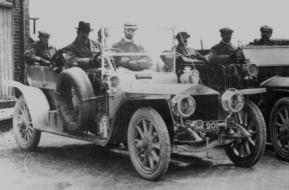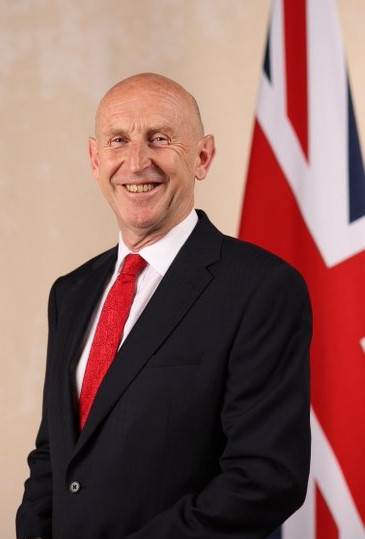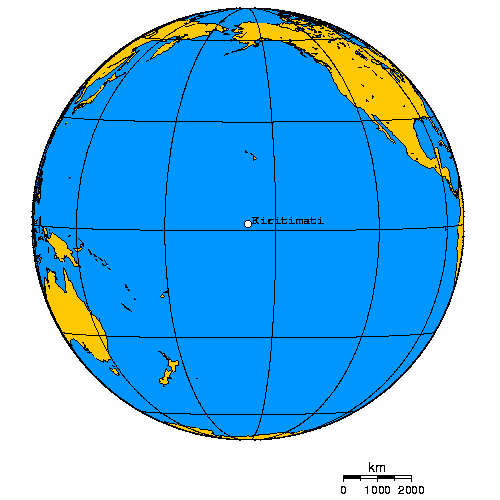|
William Richard Joseph Cook
Sir William Richard Joseph Cook, (10 April 1905 – 16 September 1987) was a British civil servant and mathematician. A graduate of Bristol University, he joined the staff of the Woolwich Arsenal in 1928, working on the 6-inch naval guns and the 3-inch anti-aircraft rocket. During the Second World War he was deputy controller of the Projectile Development Establishment. After the war, he became director of the Ministry of Supply's Rocket Propulsion Establishment at Westcott, Buckinghamshire. In 1947 he joined the Royal Naval Scientific Service, serving as its chief from 1950 to 1954, when he became deputy head of the Weapons Group of the newly created United Kingdom Atomic Energy Authority (UKAEA). It was under his leadership that Britain developed the hydrogen bomb, and he was present as the scientific director of the Operation Grapple nuclear tests at Malden Island in May and June 1957, and the successful thermonuclear test at Christmas Island in November 1957. In 195 ... [...More Info...] [...Related Items...] OR: [Wikipedia] [Google] [Baidu] |
Trowbridge
Trowbridge ( ) is the county town of Wiltshire, England; situated on the River Biss in the west of the county, close to the border with Somerset. The town lies south-east of Bath, Somerset, Bath, south-west of Swindon and south-east of Bristol. The parish had a population of 37,169 in 2021. Long a market town, the Kennet and Avon canal to the north of Trowbridge played an instrumental part in the town's development, as it allowed coal to be transported from the Somerset Coalfield; this marked the advent of steam-powered manufacturing in woollen cloth mills. The town was the foremost centre of woollen cloth production in south west England in the late 18th and early 19th centuries, by which time it held the nickname "The Manchester of the West". The parish encompasses the settlements of Longfield, Lower Studley, Upper Studley, Studley Green and Trowle Common. History Toponymy The origin of the name ''Trowbridge'' is uncertain; one source claims derivation from ''treow-bryc ... [...More Info...] [...Related Items...] OR: [Wikipedia] [Google] [Baidu] |
Westcott, Buckinghamshire
Westcott is a village and civil parishes in England, civil parish in the unitary authority area of Buckinghamshire, England, about west of Waddesdon. The Toponymy, toponym is derived from the Old English for "west cottage". The Church of England parish church of Veneration of Mary in Roman Catholicism, St Mary the Virgin was designed by the Diocese of Oxford, Oxford Diocesan architect George Edmund Street, G.E. Street and built in 1867. It is a Listed building#Categories of listed building, Grade II* listed building. In the 20th century Westcott was the site of the Rocket Propulsion Establishment, which was on the former RAF Westcott airfield to the west of the main village. This has since been closed down, and the area is called the Westcott Venture Park. BAE Systems maintains a presence on the site (BAE Systems Environmental) which advises on the decommissioning of military sites. G.E. Street also designed the parish school. It is now Westcott Church of England School, a mi ... [...More Info...] [...Related Items...] OR: [Wikipedia] [Google] [Baidu] |
Rolls-Royce Limited
Rolls-Royce Limited was a British luxury car and later an aero-engine manufacturing business established in 1904 in Manchester by the partnership of Charles Rolls and Henry Royce. Building on Royce's good reputation established with his Crane (machine), cranes, they quickly developed a reputation for superior engineering by manufacturing luxury cars. The business was incorporated as "Rolls-Royce Limited" in 1906, and a new factory in Derby was opened in 1908. The First World War brought the company into manufacturing aero-engines. Joint development of jet engines began in 1940, and they entered production in 1944. Rolls-Royce has since built an enduring reputation for the development and manufacturing of engines for military and commercial aircraft. In the late 1960s, Rolls-Royce was adversely affected by the mismanaged development of its advanced Rolls-Royce RB211, RB211 jet engine and consequent cost over-runs, though it ultimately proved a great success. In 1971, the owners w ... [...More Info...] [...Related Items...] OR: [Wikipedia] [Google] [Baidu] |
FH70
The FH70 (field howitzer for the 1970s) is a towed 155 mm howitzer used by several nations. History In 1963, NATO agreed a NATO Basic Military Requirement 39 for close support artillery, either towed or tracked. Subsequently, Germany and UK started discussions and design studies and in 1968 established agreed operational characteristics for a towed 155 mm close support gun. Italy became a party to the agreement in 1970. Key requirements were: * A detachable auxiliary power unit (APU) * An unassisted range of ; an assisted range of * A burst capability of three rounds in 15–20 seconds, six rounds per minute for a short period and two rounds per minute sustained * The ability to fire all 155 mm munitions in NATO service, plus a new range of ammunition The two national authorities had overall responsibility for R&D, and Vickers Ltd was the co-ordinating design authority. They were also the design authority for the carriage and Rheinmetall GmbH was the authority f ... [...More Info...] [...Related Items...] OR: [Wikipedia] [Google] [Baidu] |
SEPECAT Jaguar
The SEPECAT Jaguar is a British-French supersonic jet attack aircraft originally used by the British Royal Air Force and the French Air Force in the close air support and nuclear strike role. As of 2025, the Jaguar remains in service with the Indian Air Force. Originally conceived in the 1960s as a jet trainer with a light ground attack capability, the requirement for the aircraft soon changed to include supersonic performance, reconnaissance and tactical nuclear weapon, tactical nuclear strike roles. A carrier-based variant was also planned for French Navy service, but this was cancelled in favour of the cheaper, fully French-built Dassault-Breguet Super Étendard. The aircraft were manufactured by SEPECAT (''Société Européenne de Production de l'avion Ecole de Combat et d'Appui Tactique''), a joint venture between Bréguet Aviation, Breguet and the British Aircraft Corporation, one of the first major joint British-French military aircraft programmes. The Jaguar was expor ... [...More Info...] [...Related Items...] OR: [Wikipedia] [Google] [Baidu] |
Surface-to-air Missile
A surface-to-air missile (SAM), also known as a ground-to-air missile (GTAM) or surface-to-air guided weapon (SAGW), is a missile designed to be launched from the ground or the sea to destroy aircraft or other missiles. It is one type of anti-aircraft warfare, anti-aircraft system; in modern armed forces, missiles have replaced most other forms of dedicated anti-aircraft weapons, with anti-aircraft guns pushed into specialized roles. The first attempt at SAM development took place during World War II, but no operational systems were introduced. Further development in the 1940s and 1950s led to operational systems being introduced by most major forces during the second half of the 1950s. Smaller systems, suitable for close-range work, evolved through the 1960s and 1970s, to modern systems that are man-portable. Shipborne systems followed the evolution of land-based models, starting with long-range weapons and steadily evolving toward smaller designs to provide a layered defence. T ... [...More Info...] [...Related Items...] OR: [Wikipedia] [Google] [Baidu] |
Rapier (missile)
Rapier is a surface-to-air missile developed for the British Army to replace their towed Bofors 40/L70 anti-aircraft guns. The system is unusual as it uses a manual optical guidance system, sending guidance commands to the missile in flight over a radio link. This results in a high level of accuracy, therefore a large warhead is not required. Entering service in 1971, it eventually replaced all other anti-aircraft weapons in British Army service; both the Bofors guns used against low-altitude targets and the Thunderbird missile used against longer-range and higher-altitude targets. As the expected air threat moved from medium-altitude strategic missions to low-altitude strikes, the fast reaction time and high manoeuvrability of the Rapier made it more effective than either of these weapons, replacing most of them by 1977. Rapier was later selected by the RAF Regiment to replace their Bofors guns and Tigercat missiles. It also saw international sales. In October 2021, it was re ... [...More Info...] [...Related Items...] OR: [Wikipedia] [Google] [Baidu] |
Panavia Tornado
The Panavia Tornado is a family of twin-engine, variable-sweep wing multi-role combat aircraft, jointly developed and manufactured by Italy, the United Kingdom and Germany. There are three primary #Variants, Tornado variants: the Tornado IDS (interdictor/attack aircraft, strike) fighter-bomber, the Tornado ECR (electronic warfare aircraft, electronic combat/reconnaissance aircraft, reconnaissance) SEAD aircraft and the Tornado ADV (air defence variant) interceptor aircraft. The Tornado was developed and built by Panavia Aircraft GmbH, a tri-national consortium consisting of British Aerospace (previously British Aircraft Corporation), Messerschmitt-Bölkow-Blohm, MBB of West Germany, and Aeritalia of Italy. It first flew on 14 August 1974 and was introduced into service in 1979–1980. Due to its multirole design, it was able to replace several different types of aircraft in the adopting air forces. The Royal Saudi Air Force (RSAF) became the only export operator of the Tornad ... [...More Info...] [...Related Items...] OR: [Wikipedia] [Google] [Baidu] |
Chief Scientific Adviser To The Ministry Of Defence
The Chief Scientific Adviser to the UK's Ministry of Defence (United Kingdom), Ministry of Defence is responsible for providing strategic management of science and technology issues in the MOD, most directly through the MOD research budget of well over £1 billion, and sits as a full member of the Defence Management Board and the Defence Council of the United Kingdom, Defence Council, the two most senior management boards within the MOD. There is also a Chief Scientific Adviser (Nuclear), responsible for the MOD’s nuclear science and technology programme, currently held by Professor Bill Lee. List of MOD Chief Scientific Advisers * Sir Henry Tizard, 1946–1952 * Sir John Cockcroft, 1952–1954 * Sir Frederick Brundrett, 1954–1960 * Sir Solly Zuckerman, 1960–1965 * Sir Alan Cottrell, 1966–1967 * Sir William Cook (scientist), William Cook, 1966–1970 * Sir Hermann Bondi, 1971–1977 * Sir Ronald Mason (chemist), Ronald Mason, 1977–1983 * Sir Richard Norman (chemist), Rich ... [...More Info...] [...Related Items...] OR: [Wikipedia] [Google] [Baidu] |
Ministry Of Defence (United Kingdom)
The Ministry of Defence (MOD or MoD) is a Departments of the Government of the United Kingdom, ministerial department of the Government of the United Kingdom. It is responsible for implementing the defence policy set by the government and serves as the headquarters of the British Armed Forces. The MOD states that its principal objectives are to defend the United Kingdom of Great Britain and Northern Ireland and its interests and to strengthen international peace and stability. The MOD also manages day-to-day running of the armed forces, contingency planning and defence procurement. The expenditure, administration and policy of the MOD are scrutinised by the Defence Select Committee, except for Defence Intelligence which instead falls under the Intelligence and Security Committee of Parliament. History During the 1920s and 1930s, British civil servants and politicians, looking back at the performance of the state during World War I, concluded that there was a need for greater ... [...More Info...] [...Related Items...] OR: [Wikipedia] [Google] [Baidu] |
Kiritimati
Kiritimati (), also known as Christmas Island, is a Pacific Ocean atoll in the northern Line Islands. It is part of the Republic of Kiribati. The name is derived from the English word "Christmas" written in Gilbertese according to its phonology, in which the combination is pronounced /s/. Kiritimati is one of the world's largest atolls in terms of land area, consisting of about land area and a network of lagoons;. The atoll is about in perimeter, while the lagoon shoreline extends for over . Kiritimati comprises over 70% of the total land area of Kiribati, a country encompassing 33 Pacific atolls and islands. It lies north of the equator, south of Honolulu, and from San Francisco. Kiritimati is in the world's furthest forward time zone, UTC+14, and is therefore one of the first inhabited places on Earth to experience New Year's Day (see also Caroline Atoll, Kiribati). Although it lies east of the 180th meridian, the Republic of Kiribati realigned the International ... [...More Info...] [...Related Items...] OR: [Wikipedia] [Google] [Baidu] |
Malden Island
Malden Island, sometimes called Independence Island in the 19th century, is a low, arid, uninhabited atoll in the central Pacific Ocean, about in area. It is one of the Line Islands belonging to the Kiribati, Republic of Kiribati. The lagoon is entirely enclosed by land, though it is connected to the sea by underground channels, and is quite salty. The island is chiefly notable for its ancient ruins, stone architecture, its once-extensive deposits of phosphatic guano (exploited by Australian interests from 1860–1927), its former use as the site of the first British thermonuclear weapon, H-bomb tests (Operation Grapple, 1957), and its current importance as a protected area for breeding seabirds. The island is designated as the ''Malden Island Wildlife Sanctuary''. In 2014 the Kiribati government established a fishing exclusion zone around each of the southern Line Islands (Caroline Island, Caroline (commonly called Millennium), Flint Island, Flint, Vostok Island, Vostok, ... [...More Info...] [...Related Items...] OR: [Wikipedia] [Google] [Baidu] |









